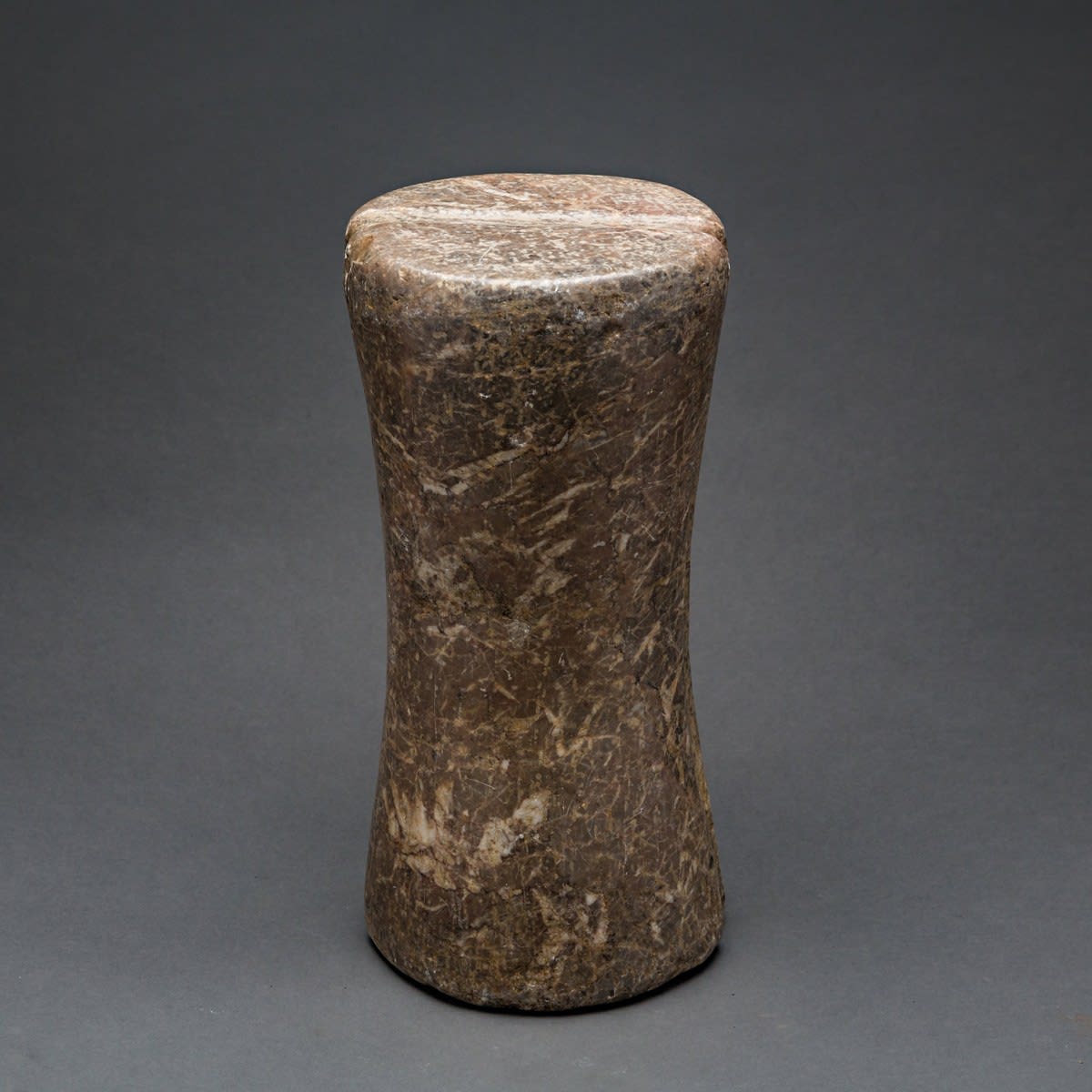Bactria-Margiana Marble Column Idol, 2500 BCE - 1800 BCE
Marble
31.6 x 14.6 cm
12 1/2 x 5 3/4 in
12 1/2 x 5 3/4 in
SF.319
This marble sculpture is of concave cylindrical form. A shallow channel encircles the object on the vertical axis, dividing it into two halves. The marble itself is a warm, pale...
This marble sculpture is of concave cylindrical form. A shallow channel encircles the object on the vertical axis, dividing it into two halves. The marble itself is a warm, pale brown shade with heavy veining. Today, these marble 'pillar-like' sculptures impress us with their simplicity of form and mysterious past.
This piece pertains to an ancient culture referred to both as the Bactria-Margiana Archaeological Complex (BCAM) or as the Oxus Civilisation. Bactria is the ancient Greek name for an area encompassing Uzbekistan, Turkmenistan, Tajikistan and northern Afghanistan. It was a mountainous and extremely fertile region with a highly developed civilisation in the late third and early second millennium BC. Excavations uncovered other intriguing artefacts such as the composite stone goddesses attesting to the presence of a vibrant religious culture.
The meaning of these objects in ancient Bactria still mystifies scholars. Many are convinced they must have had a ritual function and were perhaps worshipped as idols. Others argue they had a more practical purpose and were used as a counterweight for pounding grain or pumping water.
This piece pertains to an ancient culture referred to both as the Bactria-Margiana Archaeological Complex (BCAM) or as the Oxus Civilisation. Bactria is the ancient Greek name for an area encompassing Uzbekistan, Turkmenistan, Tajikistan and northern Afghanistan. It was a mountainous and extremely fertile region with a highly developed civilisation in the late third and early second millennium BC. Excavations uncovered other intriguing artefacts such as the composite stone goddesses attesting to the presence of a vibrant religious culture.
The meaning of these objects in ancient Bactria still mystifies scholars. Many are convinced they must have had a ritual function and were perhaps worshipped as idols. Others argue they had a more practical purpose and were used as a counterweight for pounding grain or pumping water.



